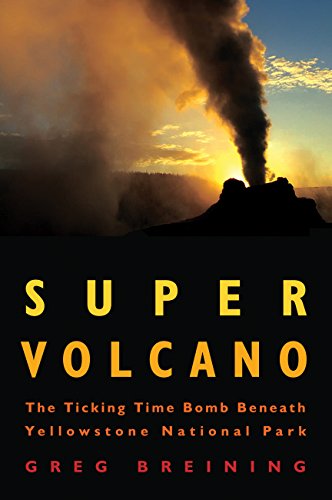One of the largest supervolcanoes in the world sits underneath California, lying dormant for the past 100,000 years. Now, researchers have gotten a clearer glimpse into what lies below the Long Valley supervolcano, uncovering 240 cubic miles of magma sitting beneath California.
It’s important to start off by saying this absolutely doesn’t mean there is any imminent danger. Experts at the United States Geological Society (USGS) are actively monitoring the supervolcano, and while there has been an uptick in activity over the past four decades, there are no signs of an eruption.
What Is the Long Valley supervolcano?
While you may have heard quite a bit about the supervolcano sitting beneath Yellowstone National Park, you may be unfamiliar with another major supervolcano in the United States, the Long Valley Caldera. The Long Valley Caldera sits in eastern California adjacent to Mammoth Mountain and measures 20 miles long by 11 miles wide.
 Super Volcano: The Tic...
Best Price: $1.77
Buy New $2.99
(as of 08:50 UTC - Details)
Super Volcano: The Tic...
Best Price: $1.77
Buy New $2.99
(as of 08:50 UTC - Details)
A caldera is basically a depression formed after the eruption of magma to the surface. As magma fills up the magma chamber below a volcano it expands the crust and the volcano grows. After an eruption, there is a tremendous amount of volume that has suddenly been displaced, which causes the ground above to sink into a bowl-shaped depression, which we call a caldera.
The Long Valley Caldera is the depression formed from the supervolcano eruption 760,000 years ago, which ejected hot ash, lava and toxic gas. The eruption 760,000 years ago erupted 140 cubic miles of material from the supervolcano. To put this into perspective, the 1980 eruption of Mount St. Helens erupted 0.29 cubic miles of material, meaning the Long Valley eruption ejected nearly 500 times that amount of material.
If all of the 240 cubic miles of magma found beneath the Long Valley supervolcano were ever to erupt, it would eject over 800 times the volume of material as the 1980 Mount St. Helen’s eruption. This is the reason geologists with the USGS continuously monitor the supervolcanoes that lie dormant beneath America. If and when one does erupt, it will trigger catastrophic destruction and loss of life. Fortunately, there is an extremely low likelihood of any supervolcano eruption occurring in any of our lifetimes. These eruptions happen very infrequently, but when they do happen, the world notices.





